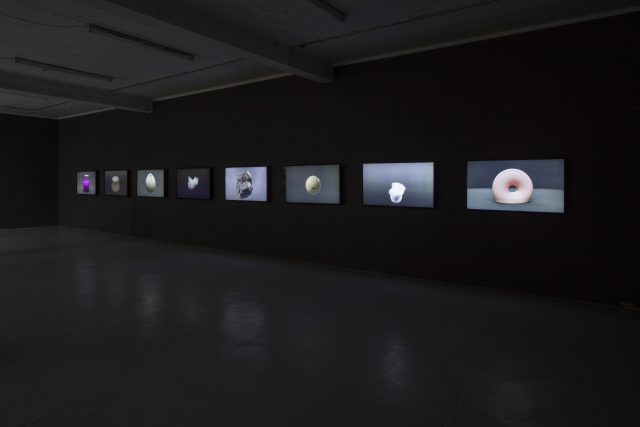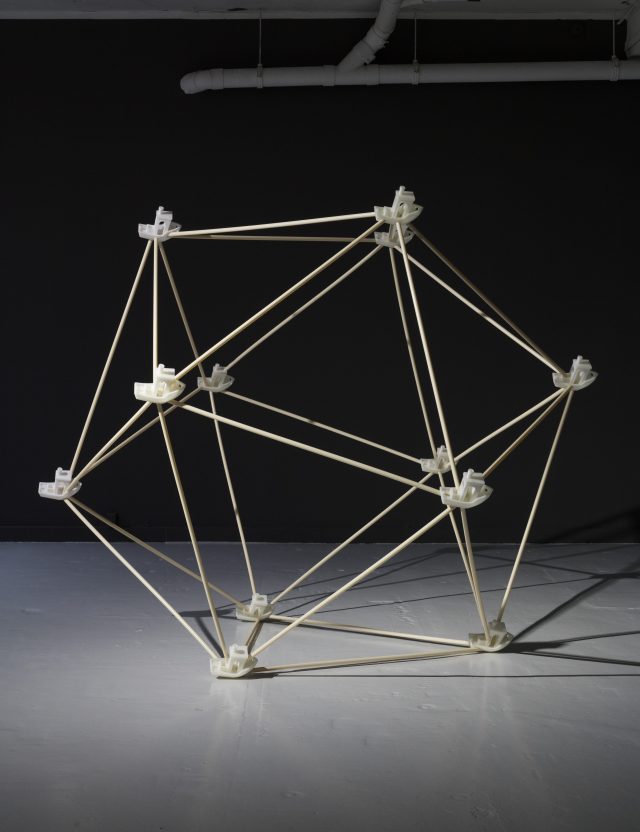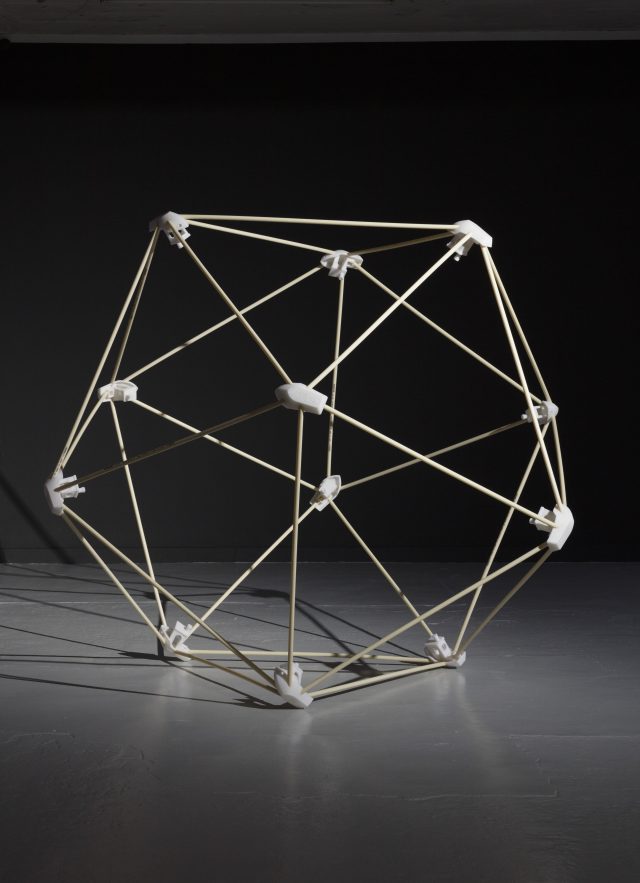solo exhibition at :
Overgaden
Institute of Contemporary Art
Copenhagen
What influence has digitality had on human perception – and not least our view of reality? These are questions central to the art of Jesper Carlsen.
In recent years he has worked intensively with computer-generated representations of objects, surfaces and spaces as part of his investigation of the digital, both as an artistic medium and as a way of looking at the world. Inspired by the constructivist avant-garde, his works are based on what the artist himself calls a ‘reductionist’ approach. They are therefore often characterised by minimal compositions and geometric forms, where superfluous layers and references are stripped away to make the digital aesthetic and the logic of its underlying structures apparent.
In Surface Encounters, Jesper Carlsen pursues this field of investigation by focusing on simulations of physical materials. The first work encountered in the exhibition is an expanse of printed wallpaper re-producing the pattern of Perlin Noise. Perlin Noise is based on an algorithm developed in 1983 by the mathematician Ken Perlin to create a more life-like reproduction of texture and materiality. The algorithm creates a kind of digital patina that smooths out transitions in the pixelated structures and is today a widely used modelling tool, which is also a recurring sub-component of Carlsen’s works.
The opening reference to the digital tool kit and Carlsen’s own work process leads to the main work of the exhibition, which consists of 8 animations. Each screen shows different 3D simulated objects that comprise a collection of some of the most basic elements of the physical world, like stone, smoke and skin. They rotate silently in a neutral space, balancing in their meticulous, almost hyperrealistic form between objective presence and fetish. Despite the objects’ seductive illusion of materiality, they are entirely virtual creations: a set of data points with a surface stretched between them. Through this sensory illusion, the works play on the underlying premise of digital image formation. It has no core, no weight. All information is communicated via the surface.
The final element of the exhibition is a range of 3D printed items: standard models of objects like ships, teapots and body parts that are used to test and calibrate 3D printers. Copied and printed repeatedly, they are drained of meaning, pointing instead to the ambivalent materiality that emerges when a model is transferred from virtual to physical reality. White and spectral as they are, they are difficult to grasp as objects – simultaneously tangible and ethereal.
With these incisions into computer generated modelling, Surface Encounters addresses the ways digital technologies and processes intervene as an active co-creator of our reality that shifts our understanding of sensory perception, materiality and representation. Maybe it is precisely in these fractures between the virtual and the real that we can gain new insight into our surroundings.













Substance 2017, preview from Jesper on Vimeo.
thanks to:


